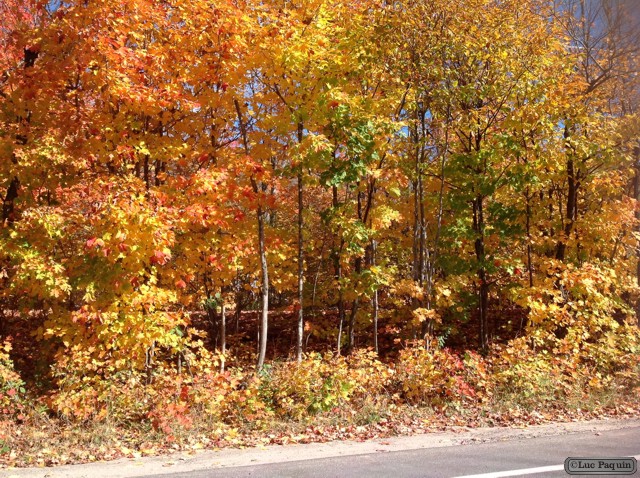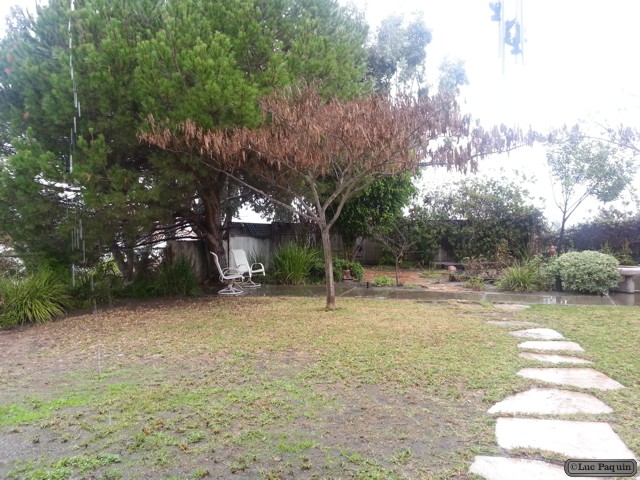LucPaquin
Year: 2015 (June 5, 2015)
11″ x 8.5″
Media: Canon® Pro Platinum High Gloss Photo Paper
Printers: Canon® PIXMA
Color
Art: Drawing
Art: CorelDRAW X4, Corel Photo-Paint X4
Artist: Luc Paquin
Jaguar E-Type
Overview
The E-Type was initially designed and shown to the public as a rear-wheel drive grand tourer in two-seater coupé form (FHC or Fixed Head Coupé) and as a two-seater convertible (OTS or Open Two Seater). A “2+2” four-seater version of the coupé, with a lengthened wheelbase, was released several years later.
On its release Enzo Ferrari called it “The most beautiful car ever made”.
Later model updates of the E-Type were officially designated “Series 2” and “Series 3”, and over time the earlier cars have come to be referred to as “Series 1” and “Series 1½”.
Of the “Series 1” cars, Jaguar manufactured some limited-edition variants, inspired by motor racing :
- The “‘Lightweight’ E-Type” which was apparently intended as a sort of follow-up to the D-Type. Jaguar planned to produce 18 units but ultimately only a dozen were reportedly built. Of those, two have been converted to Low-Drag form and two others are known to have been wrecked and deemed to be beyond repair, although one has now been rebuilt. These are exceedingly rare and sought after by collectors.
- The “Low Drag Coupé” was a one-off technical exercise which was ultimately sold to a Jaguar racing driver. It is presently believed to be part of the private collection of the current Viscount Cowdray.
The New York City Museum of Modern Art recognised the significance of the E-Type’s design in 1996 by adding a blue roadster to its permanent design collection, one of only six automobiles to receive the distinction.
Luc
Year: 2012 (December 18, 2012)
11″ x 8.5″
Media: Canon® Pro Platinum High Gloss Photo Paper
Printers: Canon® PIXMA
Color
Art: Photo
Artist: Luc Paquin
Rocking Horse Ln, Oceanside, California
Garden
Some gardens are for ornamental purposes only, while some gardens also produce food crops, sometimes in separate areas, or sometimes intermixed with the ornamental plants. Food-producing gardens are distinguished from farms by their smaller scale, more labor-intensive methods, and their purpose (enjoyment of a hobby rather than produce for sale). Flower gardens combine plants of different heights, colors, textures, and fragrances to create interest and delight the senses.
Luc
Year: 2012 (December 18, 2012)
11″ x 8.5″
Media: Canon® Pro Platinum High Gloss Photo Paper
Printers: Canon® PIXMA
Color
Art: Photo
Artist: Luc Paquin
Rocking Horse Ln, Oceanside, California
Garden
Some traditional types of eastern gardens, such as Zen gardens, use plants sparsely or not at all. Xeriscape gardens use local native plants that do not require irrigation or extensive use of other resources while still providing the benefits of a garden environment. Gardens may exhibit structural enhancements, sometimes called follies, including water features such as fountains, ponds (with or without fish), waterfalls or creeks, dry creek beds, statuary, arbors, trellises and more.
Luc
Year: 2012 (December 18, 2012)
11″ x 8.5″
Media: Canon® Pro Platinum High Gloss Photo Paper
Printers: Canon® PIXMA
Color
Art: Photo
Artist: Luc Paquin
Rocking Horse Ln, Oceanside, California
Garden
A garden is a planned space, usually outdoors, set aside for the display, cultivation, and enjoyment of plants and other forms of nature. The garden can incorporate both natural and man-made materials. The most common form today is known as a residential garden, but the term garden has traditionally been a more general one. Zoos, which display wild animals in simulated natural habitats, were formerly called zoological gardens. Western gardens are almost universally based on plants, with garden often signifying a shortened form of botanical garden.
Luc
Year: 2012 (February 15, 2012)
11″ x 8.5″
Media: Canon® Pro Platinum High Gloss Photo Paper
Printers: Canon® PIXMA
Color
Art: Photo
Artist: Luc Paquin
Citlalin, Acozac, Mexico
Tarantula
Overview
Like all arthropods, the tarantula is an invertebrate that relies on an exoskeleton for muscular support. Like other Arachnida a tarantula’s body comprises two main parts, the prosoma (or cephalothorax) and the opisthosoma (or abdomen). The prosoma and opisthosoma are connected by the pedicle, or pregenital somite. This waist-like connecting piece is actually part of the prosoma and allows the opisthosoma to move in a wide range of motion relative to the prosoma.
Tarantulas sizes range from as small as a fingernail to as large as a dinner plate when the legs are fully extended. Depending on the species, the body length of tarantulas ranges from 2.5 to 10 centimetres, with leg spans of 8-30-centimetre. Leg span is determined by measuring from the tip of the back leg to the tip of the front leg on the opposite side. Some of the largest species of tarantula may weigh over 85 grams; the largest of all, the goliath birdeater (Theraphosa blondi) from Venezuela and Brazil, has been reported to attain a weight of 150 grams and a leg-span of up to 30 centimetres, males being longer and females greater in girth.
Luc









